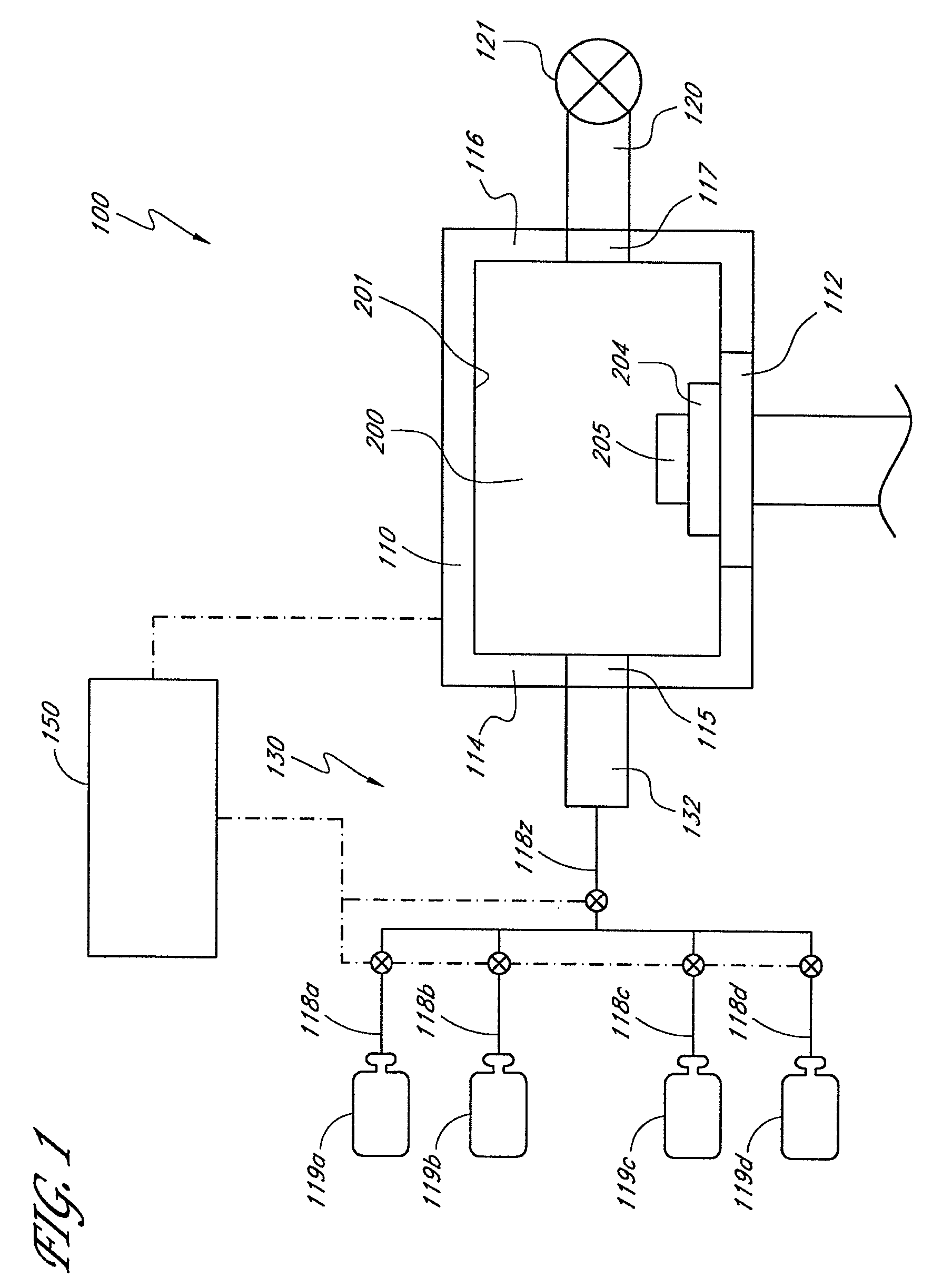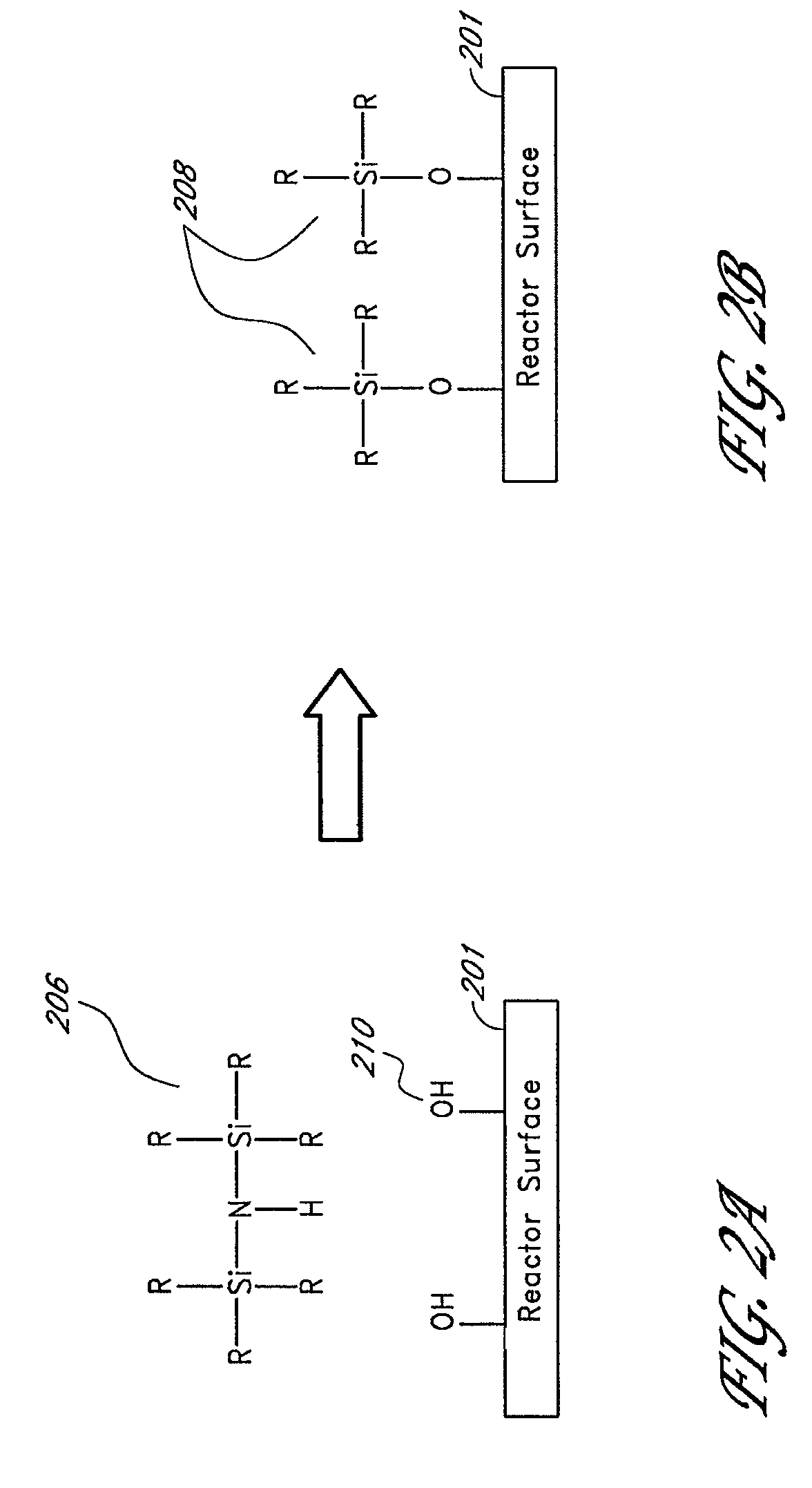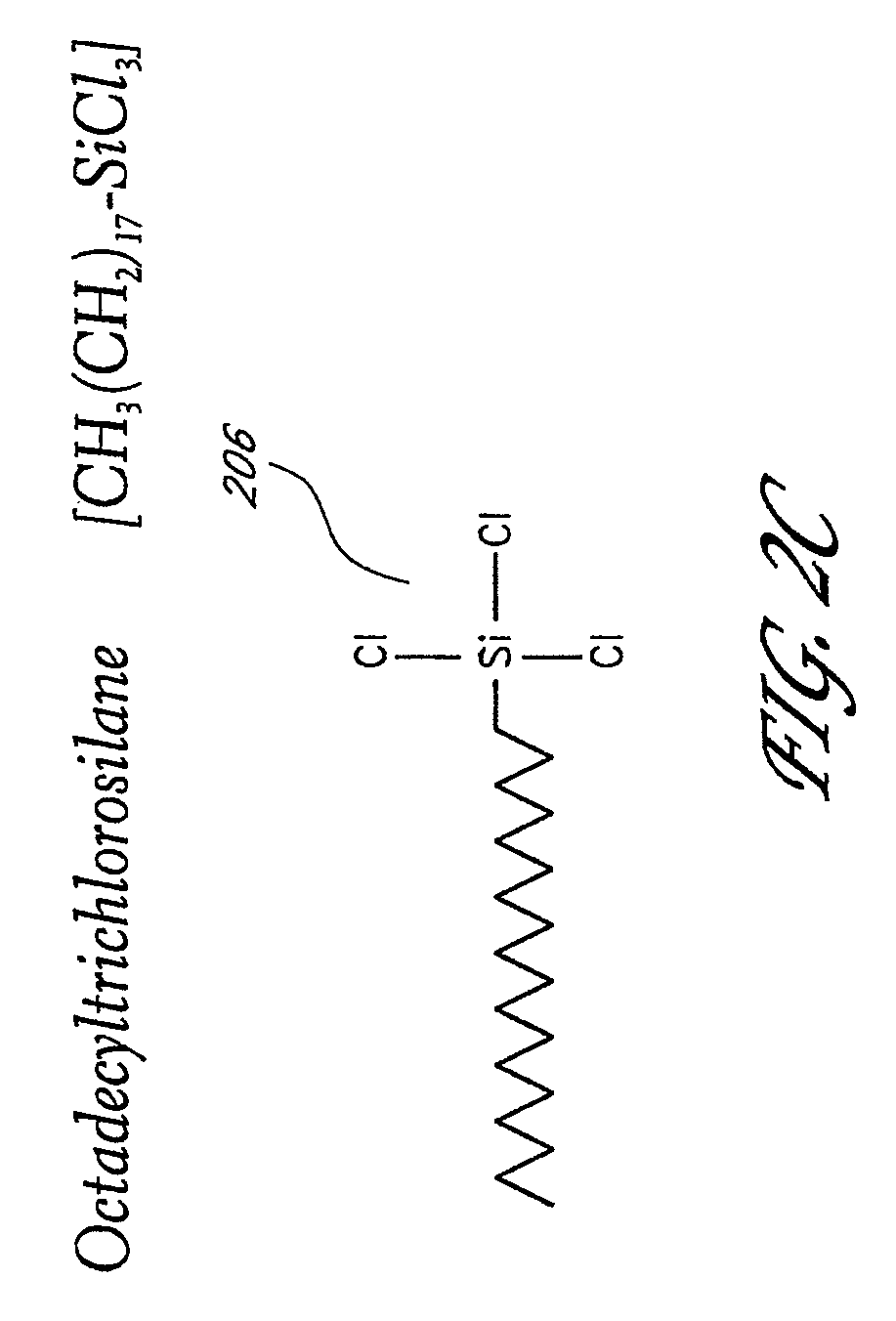Reactor surface passivation through chemical deactivation
a passivation and reactor surface technology, applied in the direction of chemically reactive gases, crystal growth process, polycrystalline material growth, etc., can solve the problems of destroying the self-limiting nature of deposition, film buildup can delaminate from the reactor surface, contaminating the substrate surface,
- Summary
- Abstract
- Description
- Claims
- Application Information
AI Technical Summary
Benefits of technology
Problems solved by technology
Method used
Image
Examples
Embodiment Construction
,” one will understand how the features of this invention provide several advantages to vapor deposition methods and systems.
[0010]According to one aspect of the invention, a method is provided for deactivating surfaces of a vapor deposition reaction space. The surfaces are treated to render the vapor deposition process conducted therein selective to the substrate, rather than the treated surfaces. In one embodiment, treatment comprises an ex situ treatment prior to assembly of the parts defining the reaction space. In another embodiment, treatment and periodic re-treatment can be conducted in situ by flowing a treatment gas through the reaction space to deactivate reaction space surfaces.
[0011]In accordance with another aspect of the invention, a vapor deposition reactor is provided with at least some of the surfaces that define a reaction space being deactivated by a monolayer that inhibits deposition reactions thereon. In the example of an atomic layer deposition (ALD) reactor, t...
PUM
| Property | Measurement | Unit |
|---|---|---|
| hydrophobic | aaaaa | aaaaa |
| thickness | aaaaa | aaaaa |
| deposition | aaaaa | aaaaa |
Abstract
Description
Claims
Application Information
 Login to View More
Login to View More - R&D
- Intellectual Property
- Life Sciences
- Materials
- Tech Scout
- Unparalleled Data Quality
- Higher Quality Content
- 60% Fewer Hallucinations
Browse by: Latest US Patents, China's latest patents, Technical Efficacy Thesaurus, Application Domain, Technology Topic, Popular Technical Reports.
© 2025 PatSnap. All rights reserved.Legal|Privacy policy|Modern Slavery Act Transparency Statement|Sitemap|About US| Contact US: help@patsnap.com



